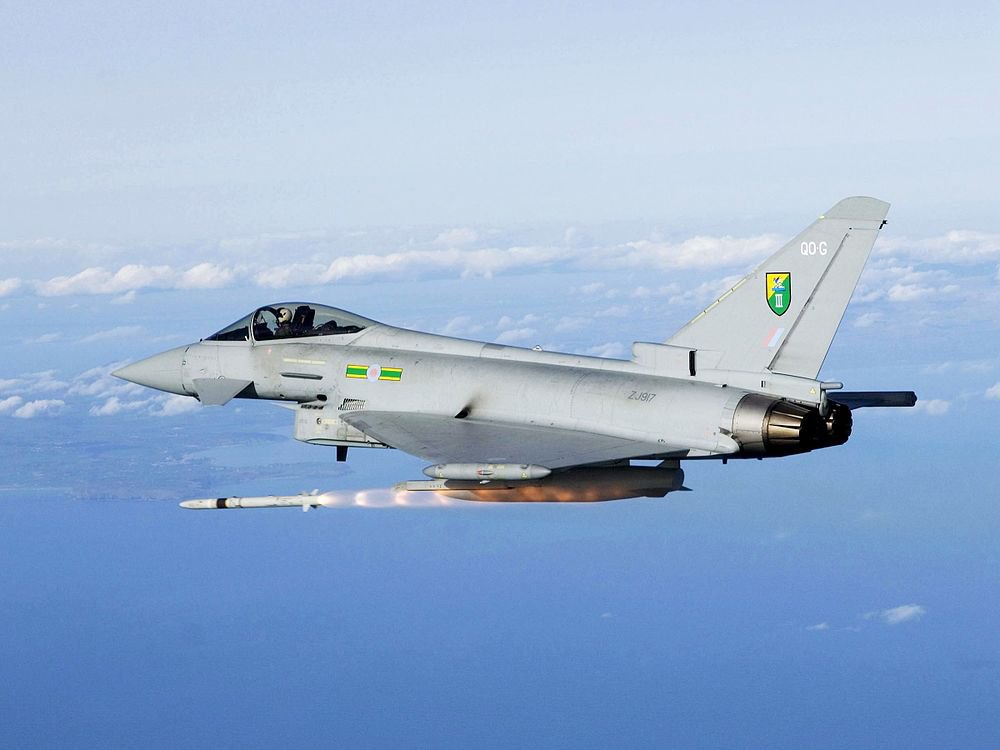
This involves adapting the AIM-132 ASRAAM air-to-air missiles, which the Royal Air Force uses with its Harrier, Tornado and Typhoon fighter jets, for ground firing.
Ukraine already uses such missiles, having fired more than 400 of them with 70% effectiveness. Considering that there have been failures, malfunctions and breakthroughs of air defence systems by high-speed cruise missiles modified to throw off false targets, this is a fairly good indicator.
What kind of missile is it?
It is a classic close-range delivery system – an infrared homing head, target acquisition after launch, high speed and manoeuvrability.
Although it cannot fly from the ground at a full combat range of 25 km, it can still capture aircraft without external targeting.
What does it mean? Launches towards Shaheds or cruise missiles, the ability to cover medium- or long-range air defence batteries, protection of important objects when the main firepower comes from anti-aircraft fire and MANPADS, but there is always a powerful and accurate high-energy 88-kilogram missile in reserve.
Raven against Shaheds
Cheap and effective – pylons from decommissioned aircraft; missiles with expiring shelf life, as the first ones were manufactured back in 1998; cost – £150–200 thousand when ordered and literally pennies as of today; HMT 600 Supercat chassis, which has a residual value of just over £1 million.
All this is called Raven – a palliative air defence system. Eight of these have already been transferred to Ukraine, and another five will be transferred in the near future.
Using an optical station with a night channel, the guidance system is directed to the point where the thermal signatures of the Shahed or missile hit the homing head through a system of “mirrors”.
That’s it, you can initiate a soft launch. The remote detonator fills the target with shrapnel, and the missile’s processor even has a choice of target areas in the aircraft – fuel tanks, cockpit, engines.
Flexibility vs Classic
No radars, no combat control points, no communications vehicles near the battery.
Plus the price, because the conditional Sky Sabre (a British air defence system equipped with short- and medium-range missiles) costs £250 million for a 70 km strip. And such a strip will be very conditionally covered by a salvo from the complex, because loitering munitions can hug the ground.
For this money, you can provide a lot of tactical air defence, which will be decentralised, will not give itself away with radar emissions, and will be flexible both in terms of frontline defence and interception of loitering munitions.
If the Russians have already bet on the wave of Shaheds, then the choice is quite clear – mobility and price.

Good news. Russia produces approximately 180 Shaheds and decoy drones per day, so we must have access to many air defence solutions at once.
This includes small anti-aircraft artillery, which will be modernised with a ballistic computer, target tracking and a night channel.
To such missiles – they are in storage, for example, in Australia, and although their stocks in the world are small, they do exist. Although there are tens of thousands of similar infrared-guided palliatives in the West.
To special “anti-aircraft drones”. I am confident that the “drone coalition” will provide not only FPV drones, but also special UAVs (for destroying fortifications or intercepting long-range drones).
There will be no single ready-made scheme that will protect us from the arrival of barrage ammunition from altitudes above 2–4 thousand metres.
Russia is generous
By connecting vehicles with optical channels, small anti-aircraft artillery and mobile groups, for example with small radars on masts or Gepards, which have their own radar, it is possible to create a more effective “core” for hunting Shaheds.
Moreover, MBDA can produce new batches of AIM-132 ASRAAM, and a contract for close combat systems for the F-35 is currently being fulfilled.
This is Block 6 – a deep modernisation, as well as a signal that the Ukrainian Defence Forces will use up their stockpiles of previously manufactured missiles. This is more profitable than disposal.
So it is not bad that Moscow has started to pay for its aggression against us with its own money. Whoever planned this whole “Mongoose Leap” can chalk it up as an achievement. In 2023, the Russians boasted that the British Ravens would only survive a few days under their guns. In 2025, we will receive hundreds of missiles for them at the Kremlin’s expense.







